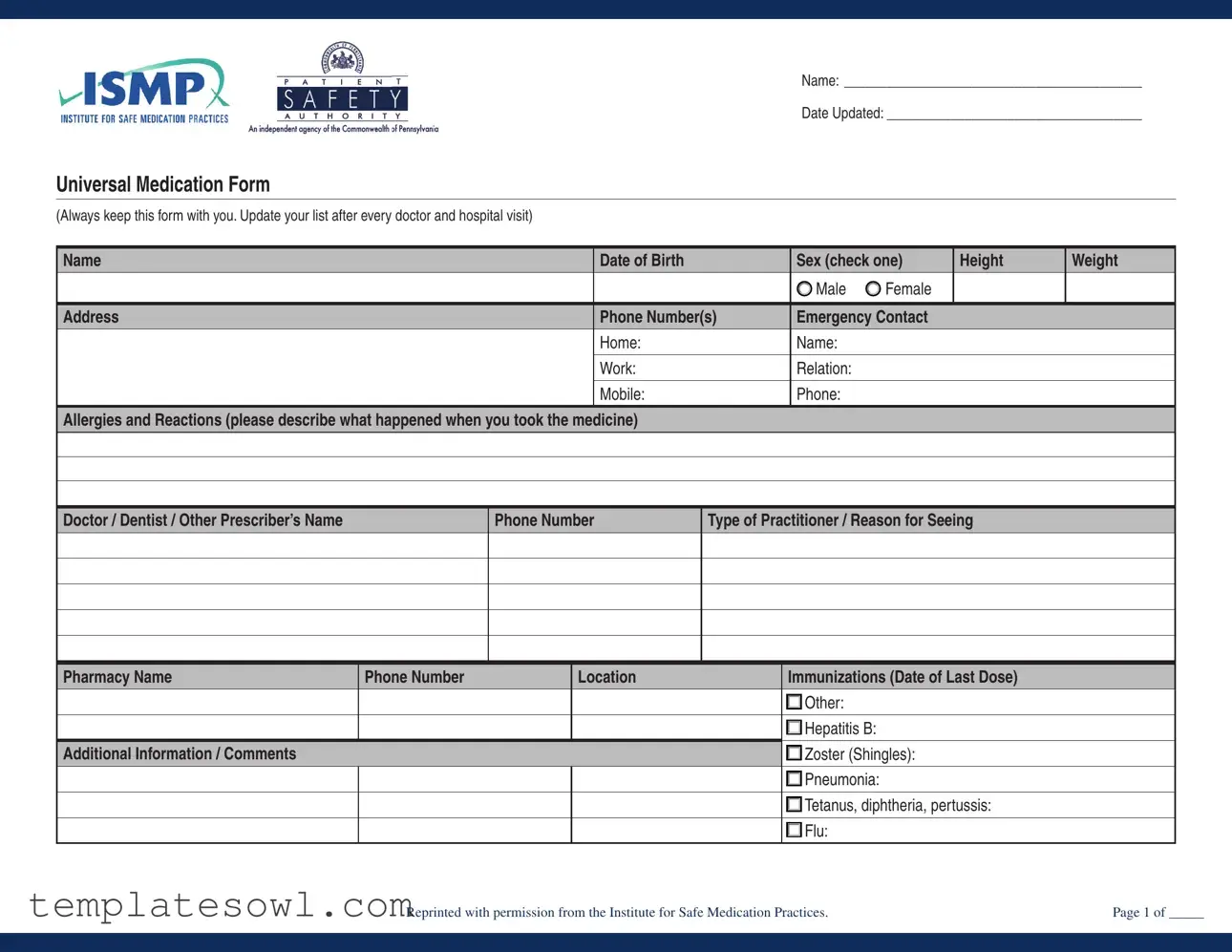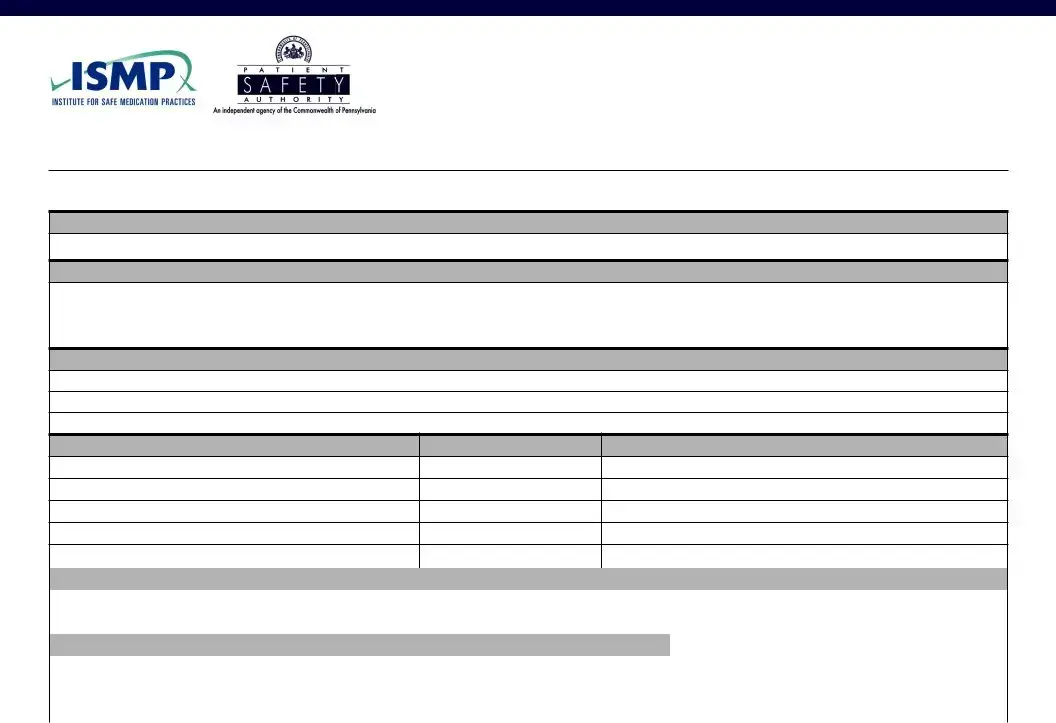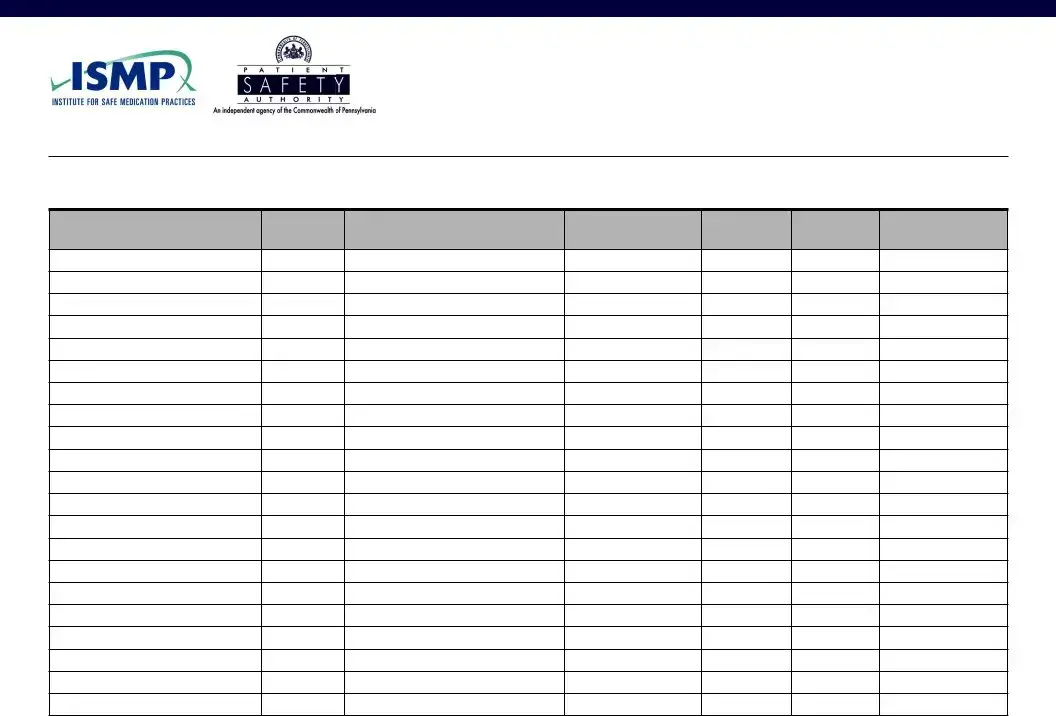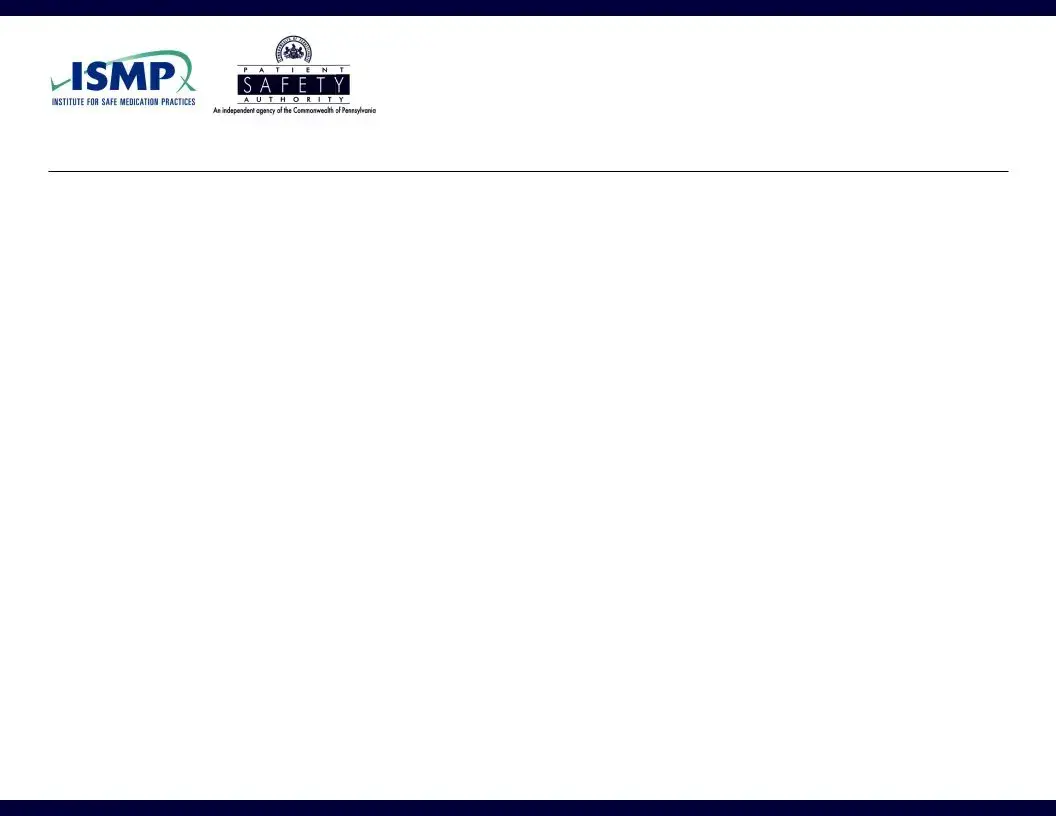Name:_ __________________________________________
Date Updated:_____________________________________
Personal Medicine Form – Instructions for Use
ALWAYS KEEP THIS FORM WITH YOU. Keep it in your wallet or purse. Give a copy to your emergency contact, another family member, or friend. Take it with you to the pharmacy when you pick up prescriptions.
Doctor and hospital visits. Take this form to all doctor and hospital visits and when you go for appointments and tests.
Allergies. List any reaction you have experienced from medicines that required you to stop taking that medicine such as allergies or bad side effects. Also include any allergy to dye, food, or insects, etc. Please write what happens to you if you are exposed to these things.
Doctor/dentist/other prescriber. List their names and a phone number in case they need to be contacted about your medicines.
Pharmacy. List the pharmacy name, phone number, and location in case there are questions about your medicines.
List of medicines. Write the brand and generic name of each medicine, your dose, how often and how (by mouth, under your tongue, injection, etc.) you take it. List the reason you take the medicine. Note the date you started taking it. If you stop taking a medicine, draw a line through it and list the date you stopped taking it. List all tablets, patches, drops, ointments, injections, etc. Include prescription, over-the-counter, herbal, vitamin, and diet supplement products. Also list any medicine you take only on occasion (like Viagra, nitroglycerin). If you need extra pages, write your name on each page.
Update the list. Update your list after every doctor visit when the dose of a medicine is changed, a new medicine is started, or an old one is stopped. Ask your nurse, pharmacist or doctor to help you update your list when you leave the hospital. You need to know what medicines to take and what to stop taking. Bring the updated form to any and all follow up appointments at your doctor’s office, hospital, and pharmacy. Once a year ask your community pharmacist to review and update the list with you.




